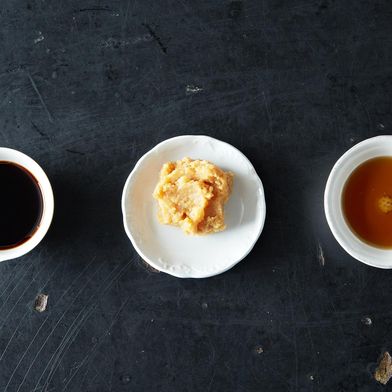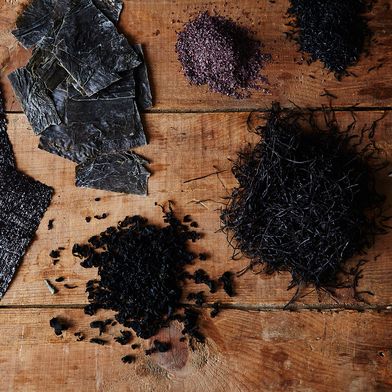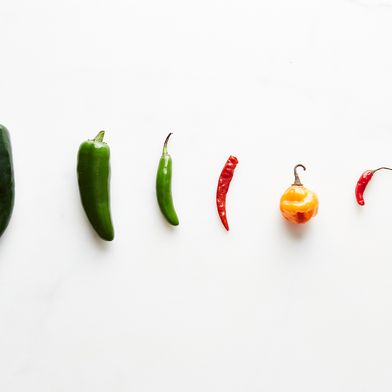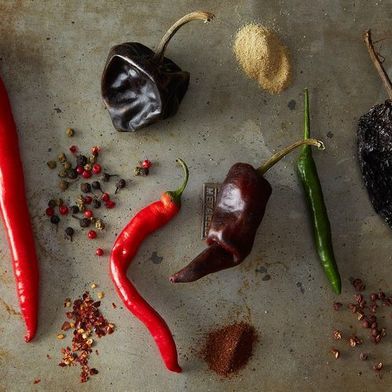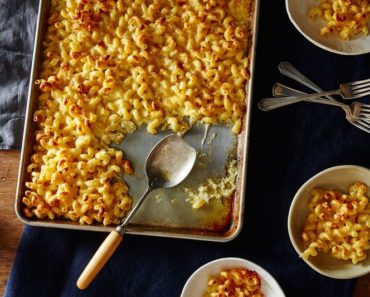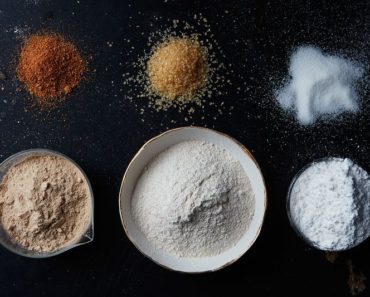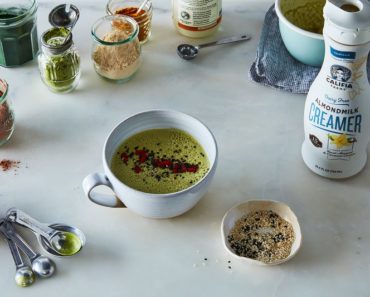Inspired by The Art of Flavor, we’re explaining (a few of) the major principles you need to be a creative, more confident cook. Today, your toolkit for tweaking dishes so that they’re jussssst right.
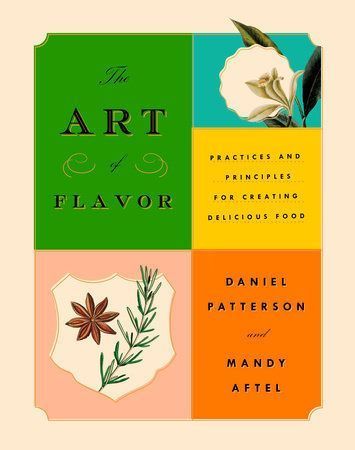
You’ve studied up on the four rules of flavor, you’ve carefully selected your ingredients and your cooking method, and you’ve thought about how you’ll balance similar ingredients with contrasting ingredients and heavy ingredients with light ones. And—what a coincidence—you came up with this Tomato Salad with Grilled Corn, Feta, and Hazelnuts.
Only the tomatoes weren’t quite as ripe or fruity as you imagined… and the corn is on the verge of being burnt (whoopsy-daisy)… and you ran out of vinegar partway through making your vinaigrette.
(Does this sound like a brain teaser or what?)
Not to worry! To fine-tune your dish—and take into account the temperature at which its served, and what other players are on the table—you have 7 taste dials at your disposal. (In this case, consider adding lime to your vinaigrette in place of the vinegar, then rounding it out with honey!)
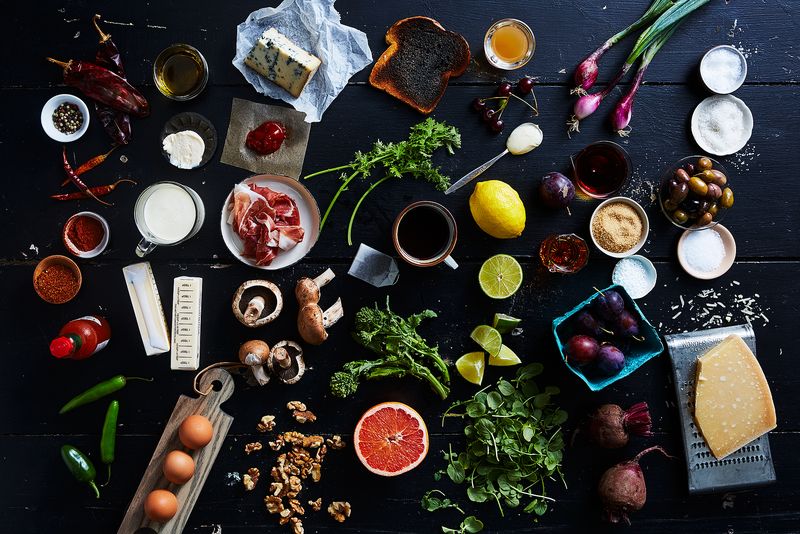
Photo by Julia Gartland
While we may think of these 7 dials—salt, sweet, sour, bitter, umami, fat, heat—as “flavors” (and speak of them as such—this apple tastes sweet, this radicchio bitter, this miso salty), it’s important to note that they’re not flavors in and of themselves: “they are qualities of ingredients that have their own distinctive flavors, any of which may be key components of the dish you are making.”
Two sources of fat (like bacon or egg yolks) will have different flavors, as will two sources of salt (like olives and kosher salt), and two sources of sweetness (like roasted beets or maple syrup). “Those qualities are useful when it comes time to shaping and balancing—adjusting—the overall experience (flavor) of a dish.”
These taste dials—which Patterson and Aftel liken to the knobs on a stereo—will help you compensate for a less-than-ideal ingredient (a bland tomato, a tart pint of raspberries, particularly bitter broccoli rabe), or fix a cooking mistake, or pair one dish with the meal at large. These taste dials are your security blanket (and your secret superpower!). To honor these powers, you must be willing to taste (A.B.T., always be tasting!) and to smell—that’s the best way to know what move to make next.
Below, we’ll give you a rundown of each dial, with key points to keep in mind as you incoporate that taste into your cooking.

1. Salt = The MVP
Fine salt (like sea salt or kosher salt), flaky finishing salt, coarse salts like fleur de sel and sel gris, anchovies, olives, salty cheeses
- Salt is, according to Patterson and Aftel, “the most important seasoning of all. It enlivens, it draws out flavor, it balances sweetness and acidity, and it boosts aroma.
- One way to judge whether you’ve added the”right” amount (a subjective assessment!) is to focus on the fullness of flavor in the dish: If the flavor disappears too quickly on your tongue after you’ve had a taste, the dish probably needs more salt.
- Over-salting is far worse than under-salting—so start slowly.
- Salt counteracts sweet: A pinch of salt makes a dessert less sweet while sharpening the flavor. The addition of salt to caramel, for example, brings out the complex, bitter components.
- Salt amplifies sour: When you add salt to an acidic dish, the acidity will be more prominent (so be judicious when you’re salting a vinaigrette, for example).
- Salt tames bitter: When sprinkled on bitter vegetables like eggplant and late-season cucumbers, salt draws out moisture, and with it, residual bitterness. And, in conjunction acid, salt makes bitter ingredients, like radicchio or broccoli rabe, more mellow.
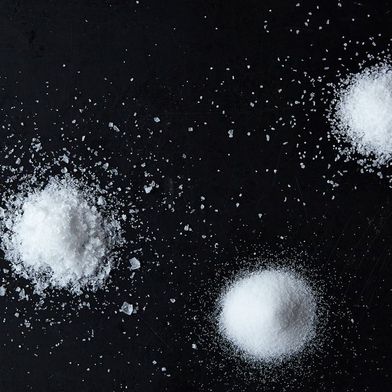
by Caroline Lange
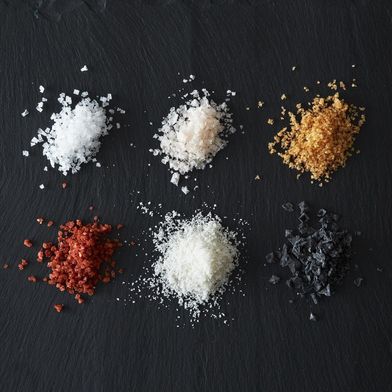
by Sarah Jampel
2. Sweet = The Good Cop
Molasses, brown sugar, white sugar, Demerara, turbinado, honey, agave, maple syrup, fruits and vegetables like onions, beets, and carrots
- Sweet mellows salt, sour, and bitter: As the foil to the salty, sour, and bitter dials, sweet is the tool that can tame any member of that aggressive trio.
- Still, adding too much sweetness will make a dish heavy and dense.
- Sweetness can create the perception of richness in a broth, soup, or sauce (this might come from steeping slow-cooked vegetables or simply adding a pinch of sugar).
- And sweetness can add fullness to round out sharp flavors (like when honey or maple syrup is added to a vinaigrette).
- Added sugar can make the flavors of naturally-sweet ingredients more prominent (think about the effect of just teaspoon or two of sugar on sliced strawberries).
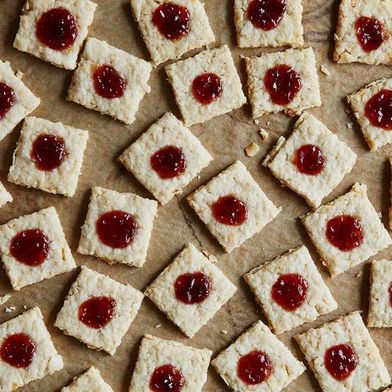
by Ali Slagle

by Shauna Sever
3. Sour = The Bad Cop
Vinegar, yogurt, buttermilk, sour cream, citrus, sorrel, sour cherries, pickle-based condiments
- “Sour” is used to describe any acidic ingredient, be that something fermented (like vinegar or beer), made from a culture (like yogurt or sour cream), or acidic by nature (like sorrel or watercress).
- Sour cleans up fatty or murky flavors, brightens vegetables and soups (lemon zest does wonders for tomato sauce!), and creates complexity among otherwise flat flavors.
- Vinegar is the strongest, most direct kind of sour, while citrus has “tempered acidity,” offset by sweetness (citrus—and most fruits—will change in acidity during the growing season; the crop will be sweeter and less acidic as the season progresses).
- Sour pushes down salt, sweet, and bitter, and it relieves richness, giving your dish new energy.
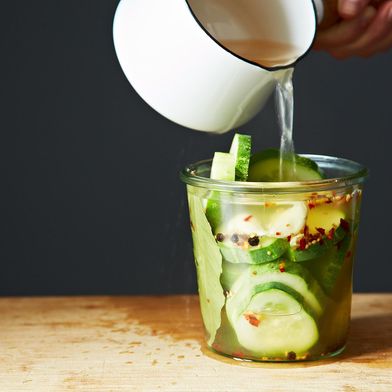
by Sarah E Daniels
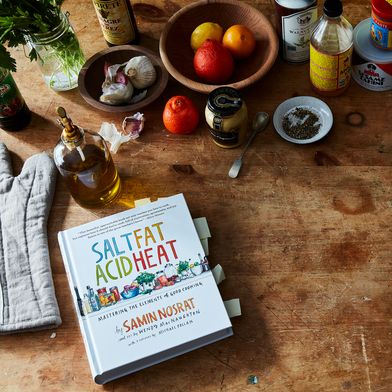
by Caroline Lange
4. Bitter = The Frenemy
Radicchio, broccoli rabe, grapefruit, endive, beer, tea, coffee
- Bitterness is more commonly found in vegetables than in fruits and spices
- Bitterness contributes complexity to dishes that might otherwise be too plain or boring—but a little goes a long way, so use it conservatively.
- The bitterness that comes from charring fish, meat, and vegetables will cut richness and add depth (but too many burnt bits will make that same food unbearable).
- Bitter balances sweet and gives it dimension.
- Bitter can be reined in with sour, salt, and fat to make it more palatable.
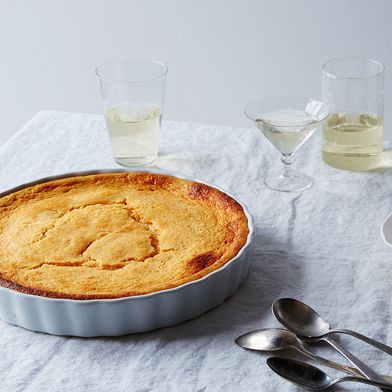
by Sarah Jampel
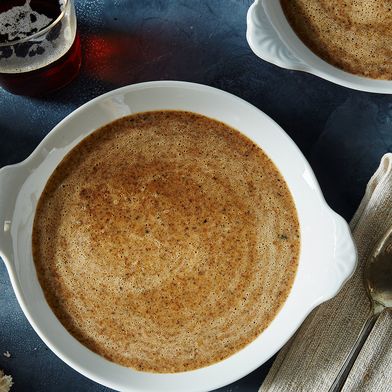
by Kristen Miglore
5. Umami = The Dark Horse
Ketchup, Worcestershire sauce, seaweed, tomatoes, mushrooms, walnuts, sourdough, miso, soy sauce, broccoli, aged cheese and meat
- Umami adds intensity (or, as the authors put it, “it’s the volume dial”). Adding ingredients high in umami will give your finished dish more depth and power (and give a light, flyaway dish more substance).
- Salt intensifies umami.
- Acid diminishes umami.
- Umami can also be achieved through cooking method—as in the Maillard reaction—rather than the addition of ingredients.
- Too much umami might lead to an overly dense or overwhelming flavor.
6. Fat = The Team-Player
Animal fat and animal products, like eggs, milk, cream, and butter, oils processed from olives and nuts
-
Fat carries
the team on its back, distributes, and cements flavor—a flavor that is bound in an emulsion with fat has more staying power and intensity than it otherwise would. - Yet fat is like “a blanket that lies on top of highly flavored ingredients, keeping them down.” Incorporating more fat will necessitate additional salt and acid.
- Fat balances sour.
- Fat tempers salt and bitter.
- Fat turns down heat.
- It’s important to remember that fats have distinct flavors and qualities: Animal fats are heavy and rich; dairy fats are on the sweeter side; and vegetable and nut oils have a leaner profile.
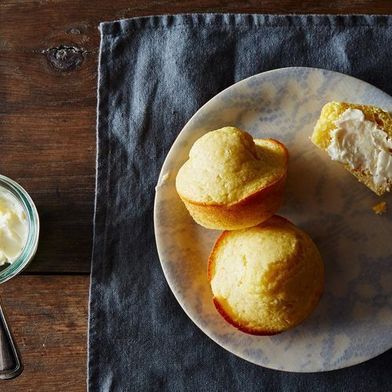
by Caroline Lange
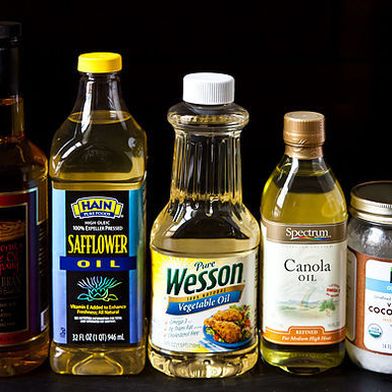
by Sarah Jampel
7. Heat = The Wildcard
Pepper, mustard, chiles, ginger, horseradish, hot sauce
- Heat creates dynamic, complex flavors, bringing liveliness to dishes that might otherwise be bland.
- Heat intensifies spices, like in the way a dash of cayenne can make cardamom or cinnamon more pronounced.
- Heat alleviates richness (which is what makes hot sauce plus mayonnaise such a beautiful combination).
- Heat can work with every other dial.
Now that you’ve mastered the four rules of flavor and have seven tools in your tool-belt for fine-tuning any mistakes (and seasoning on the fly), you’re more than ready to get into the kitchen.
But if you need a little review before you get cooking…
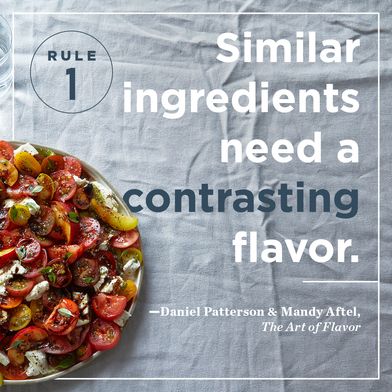
by Sarah Jampel
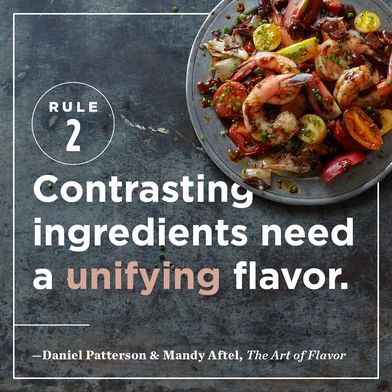
by Sarah Jampel
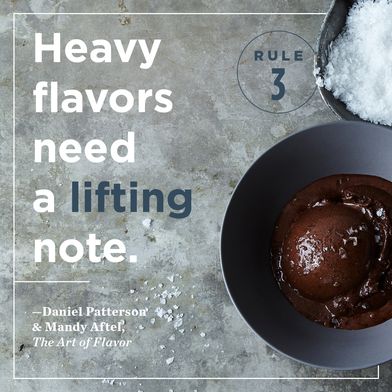
by Sarah Jampel

by Sarah Jampel
Is there one particular adjustment—besides adding more salt—that you find yourself making over and over again to fix what you’ve cooked? Tell us in the comments below.
(via Food52)

